By Karen Loh
Model of a Manila galleon sitting proud at the ACM, constructed by master ship modeller Máximo Agudo Mangas, and historical researchers Iván Valdez-Bubnov, Jorge Loyzaga
During our MV Training Programme, we learn about the Treaty of Tordesillas of 1494 when an imaginary demarcation line was drawn 370 leagues to the west of Cape Verde islands, from pole to pole, dividing the world between Portugal and Spain to explore new lands outside Europe. In this treaty, it was agreed that the Portuguese would sail east while the Spanish sail west. While we are familiar with what happened to Melaka when the Portuguese arrived after sailing south of the West African coast, around the Cape of Good Hope and then India, we do not know as much on how the Spanish fared. Well, maybe except for Ferdinand Magellan, who had a personal servant (/slave) and interpreter called Enrique of Melaka, or Henry the Black, believed to be the first person to actually circumnavigate the world.
Sailing west, Ferdinand Magellan, a Portuguese who changed allegiance and worked for Spain under King Charles, arrived at the islands later known as the Philippines (named after King Phillip II) in 1521. Magellan had sailed south of the Americas and made a courageous voyage across the Pacific Ocean. Meanwhile, in the same year, the Spanish conquered the Aztecs and captured their city of Tenochtitlan, capital of the Mexica.
The Spanish soon found their way overland to the port of Acapulco located on the west coast, but it would take another 44 years before the Manila galleon Transpacific trade began.
The Spanish could not find a favourable route back to Acapulco. For example, while it generally took around 40 days from Acapulco to Manila, the return journey took around 6 months, if the ships survived the rough and turbulent Pacific Ocean. It would take many failed Spanish expeditions before they found a route with agreeable winds to take them home. From 1565 -1815, a period of 250 years saw thriving trade between these two ports, carried on Manila galleons. The galleons only made one return journey per year and were funded by the Spanish royal treasury.
In 1571, Miguel López de Legazpi conquered Manila for Spain. Manila became Spain’s only link to Asia since the other route through the Indian Ocean was controlled by the Portuguese and later the Dutch and the British. It was an important link for several reasons. Not only were the Spanish able to purchase much sought-after commodities from China, Japan, Southeast Asia and India to import to Mexico, the Americas and Spain, but the galleons also brought silver, gold, and new types of food (especially chocolate) to Asia. Furthermore, they had a spiritual mission: to spread the Christian faith, carrying priests onboard these galleons.
This special exhibition entitled: Manila Galleon, from Asia to the Americas at the Asian Civilisations Museum in Singapore focuses on the trading network of goods and commodities. Through its 130 exhibits collected from the 16th-20th centuries, the exhibition features the trading network not only of goods like porcelain, silk, textile, tea, spices, silver, and other commodities, it also tells the story of the people and the exchange of their technologies and cultures. What was most interesting for me were the food and animals from the Americas. Did you know that maize (corn), chilli, papaya, pineapple, peanuts, cassava (tapioca), tomato, sweet potato, avocado, turkey, and chocolate made from the cacao bean were brought from the Americas?
This Tree of Life has photos of people of African, Chinese, Filipino, Mexican, and Spanish descent, most of them mestizos, which means people of mixed heritage besides cutouts of food and luxury items carried on the Manila galleons
Mancerina. A Mancerina is a cupholder attached to a large saucer, used to serve hot chocolate. The saucer makes the hot chocolate easier to hold avoiding burnt fingers, serves to catch any hot chocolate which may spill over and also to hold pastries! Mancerinas come in many designs and can be made in porcelain, silver, brass etc. This mancerina with crab legs is one of my favourite designs
John the Evangelist, Mexico 17th century. I found this exhibit very interesting as it is made out of feathers! Painted paper or gild is sometimes added to add brilliance. Take a closer look. Can you see the gold halo?
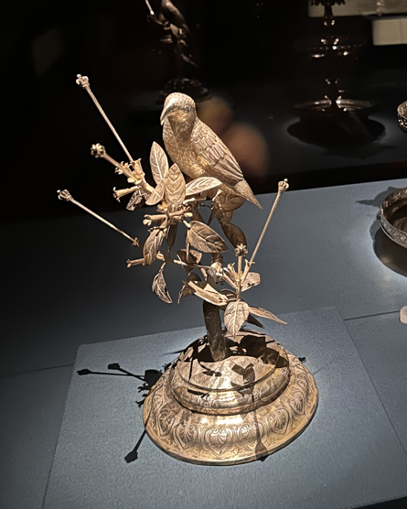
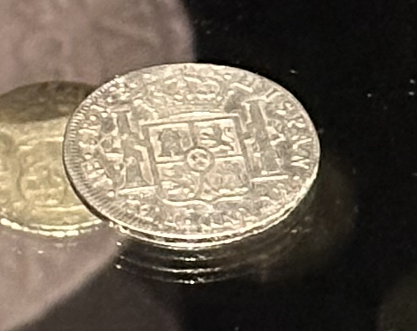
A silver bird ornament with silver picks and a Spanish dollar. As China demanded to be paid in silver, and Spain had access to it through its conquest of the Americas, which produced this white metal, huge amounts of silver came on the Manila galleons. It was the first global currency! The Spanish dollar, also known as ‘pieces of eight’ because it was worth eight reals, was also minted in silver
Life-sized portrait of Hasekura Tsunenaga c1616. Hasekura Tsunenaga (1571-1622) was a samurai who was sent to Rome by the feudal lord of Sendai. He met with Pope Paul V in 1615. This portrait was painted to commemorate the event. Look at the fine details of Hasekura’s outfit, the ship representing his voyage and angels above the ship representing his faith
Afidah and I, taken at the Manila Galleon Exhibition
The Manila Galleon Exhibition at the ACM is on until 17 March 2024. Do PM me if you have any questions.
References:
- Oon, Clement (Exhibition curator) (2023). Manila Galleon: From Asia to the Americas. Oxford Graphic Printers
- History world. (2012). Timeline: Spanish empire. Online reference https://www.oxfordreference.com/display/10.1093/acref/9780191737671.timeline.0001
- African Lisbon Tour. (January 2, 2017). Henry the Black. https://africanlisbontour.com/2017/01/02/henry-the-black/

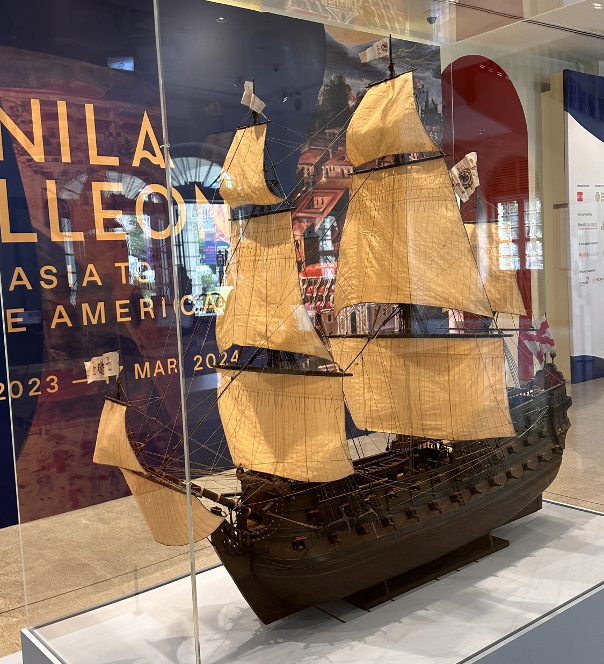
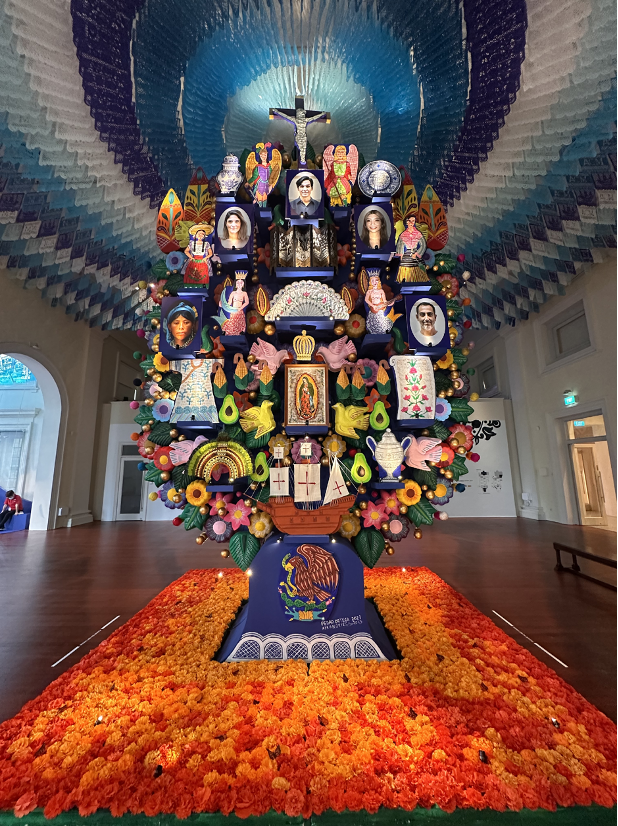
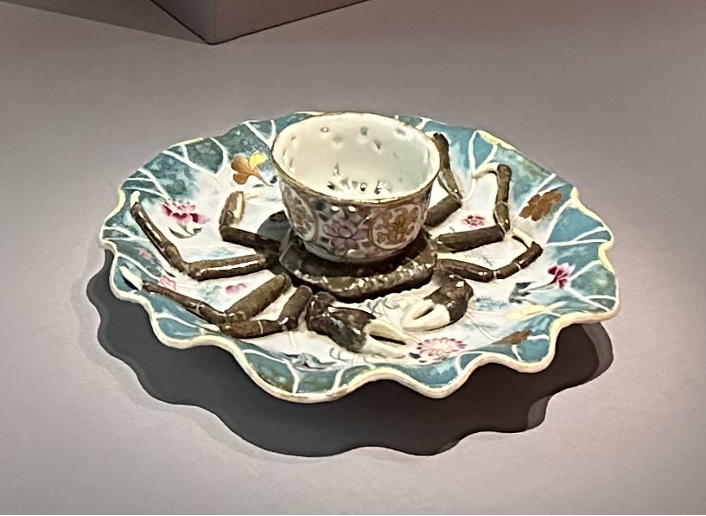
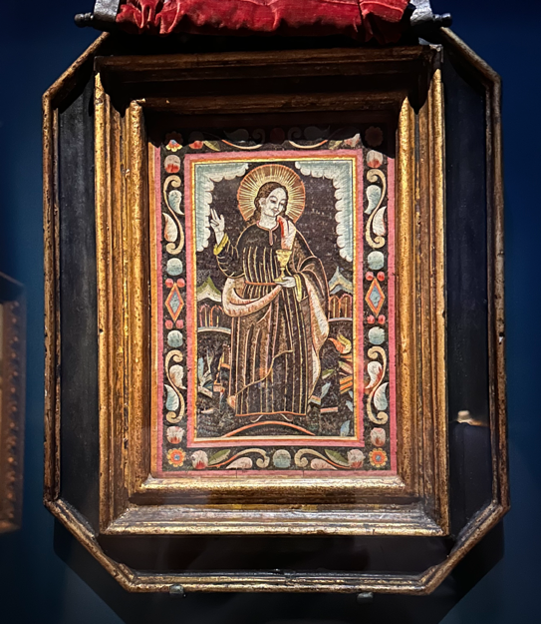
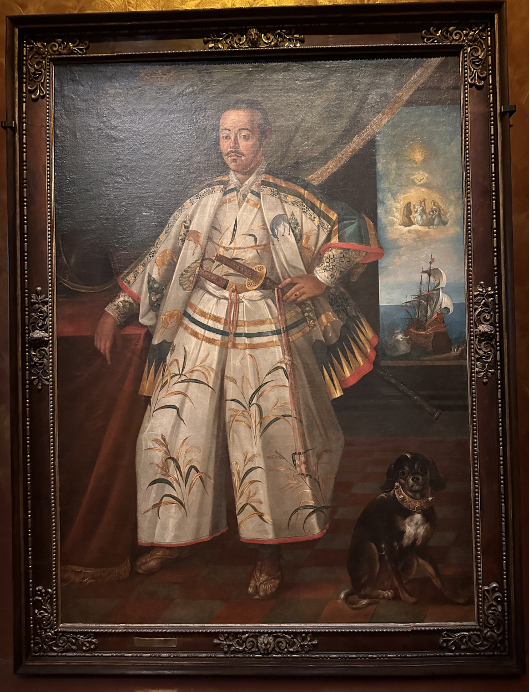
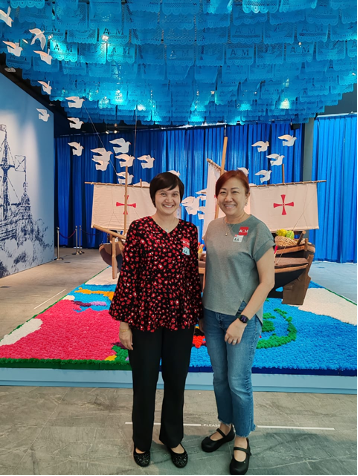
Thank you Rose. It is a very interesting and informative exhibition
Wonderful exhibition. Thanks for the article, Karen!
Thanks Rose. It is such a well curated exhibition. Wish all our mvs could see it